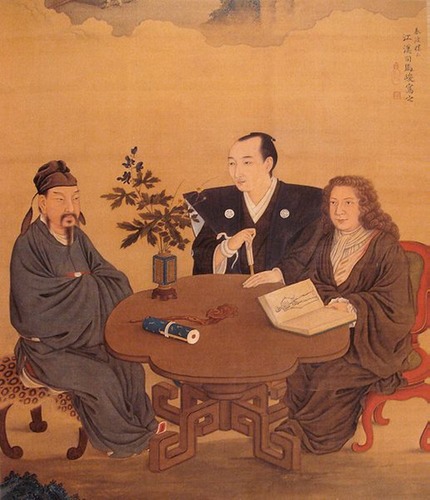Shiba Kokan A meeting of Japan, China and the West late 18th century

The first encounter of Japanese with Western art in Meiji Japan has always been characterized by amazement about the high degree of realism of the depiction of nature. It demonstrates that the Japanese of that time approached nature or reality in a different way. An approach one can also see in the classical Chinese and Japanese painting tradition. This tradition is embedded in the Eastern (philosophical) way of thinking. In the Western way of thinking observing nature or reality is based on the division between subject and object. It is the keystone of Western logical thinking and constitutes the foundation of the development of Western science since the Renaissance. Traditionally in China en Japan the division between subject and object is less sharp. Consequently reality is observed in a different way, less exact and definite. In line with the Eastern way of thinking the ideal of the Chinese and Japanese classical painters was to become one with their object. To infuse the painted representation with energy or life itself. These principles are rooted in the Chinese painting tradition since 500 AC (see left) This implies that the process of painting is as important as the result of the process. The painted representation is a temporary animated snapshot going his own way. Consequnetly the position of the viewer of art in the East was different from the West: more focussed on the active artist and less observer of the result of the action. Therefore Japanese classical landscape paintings often show a less realistic representation of reality but rather a more individual,temporary and subjective experience of reality.